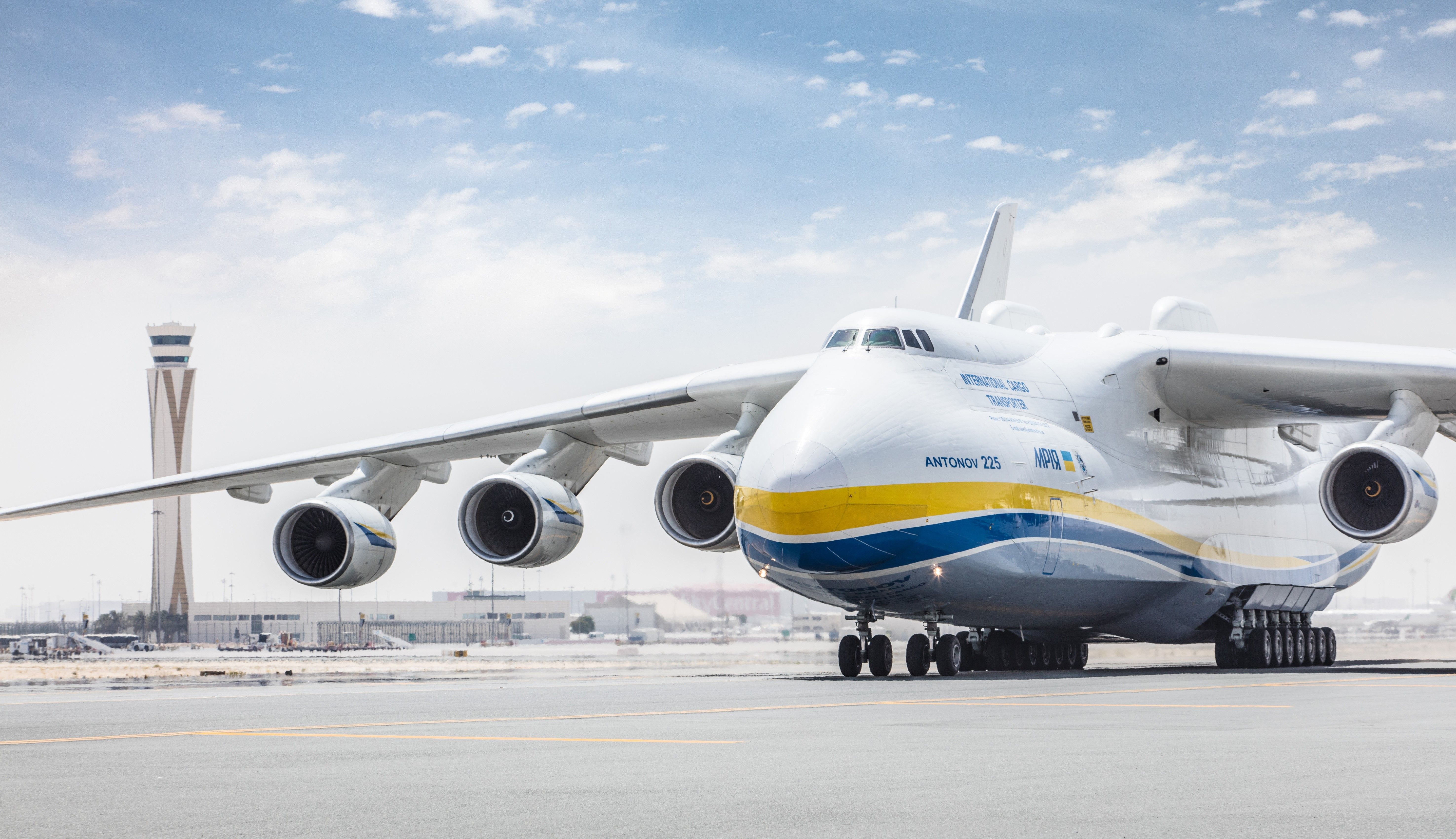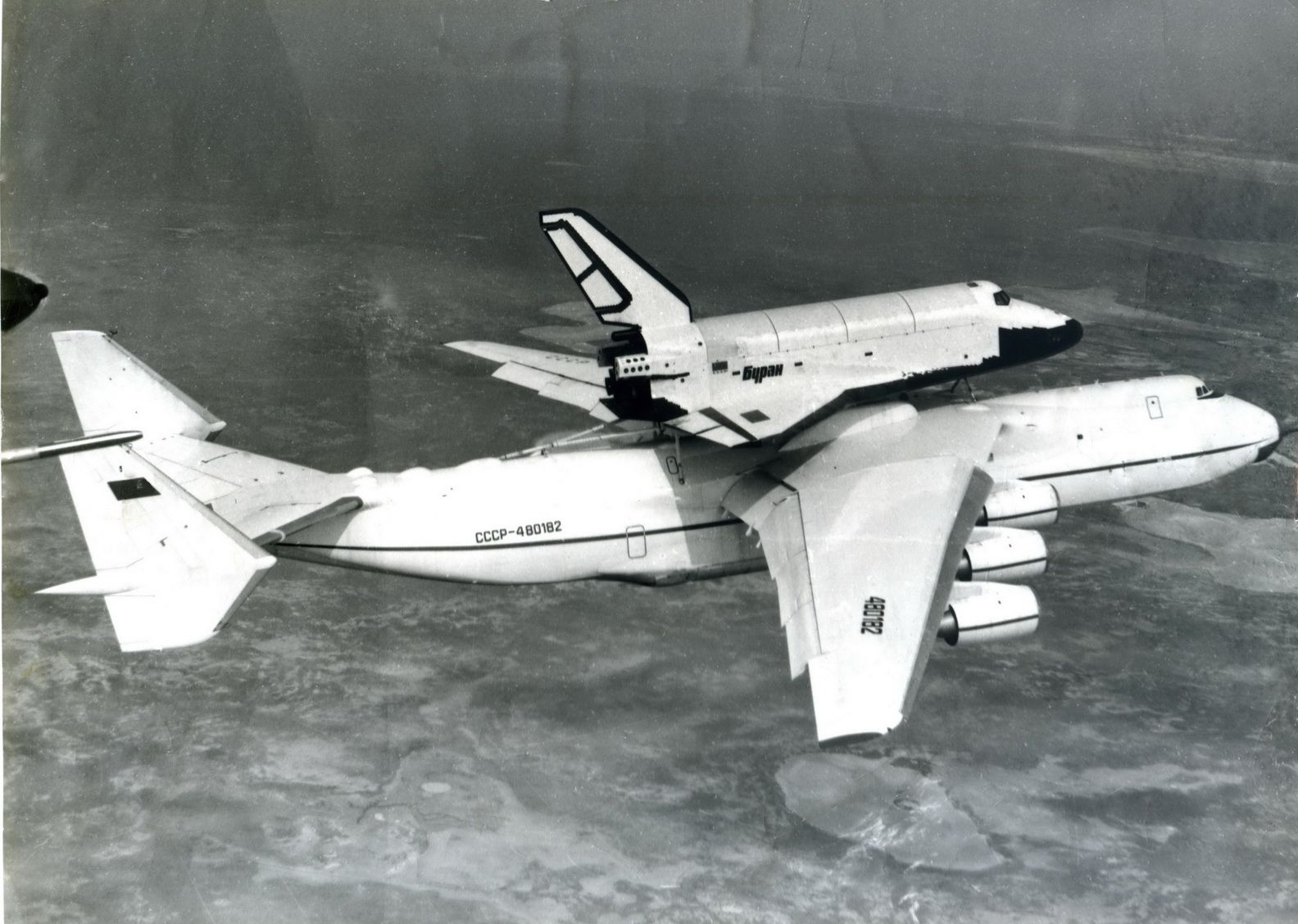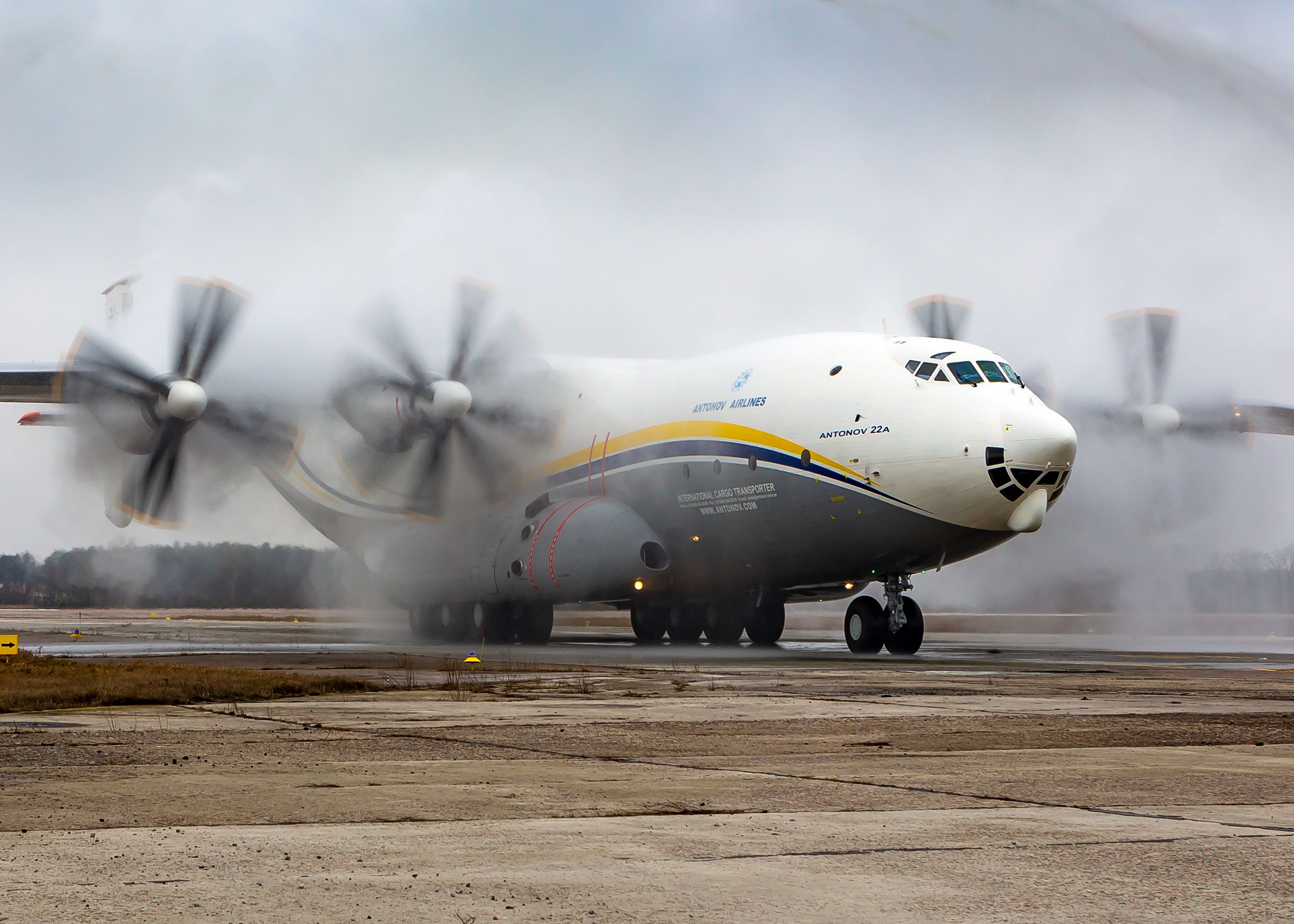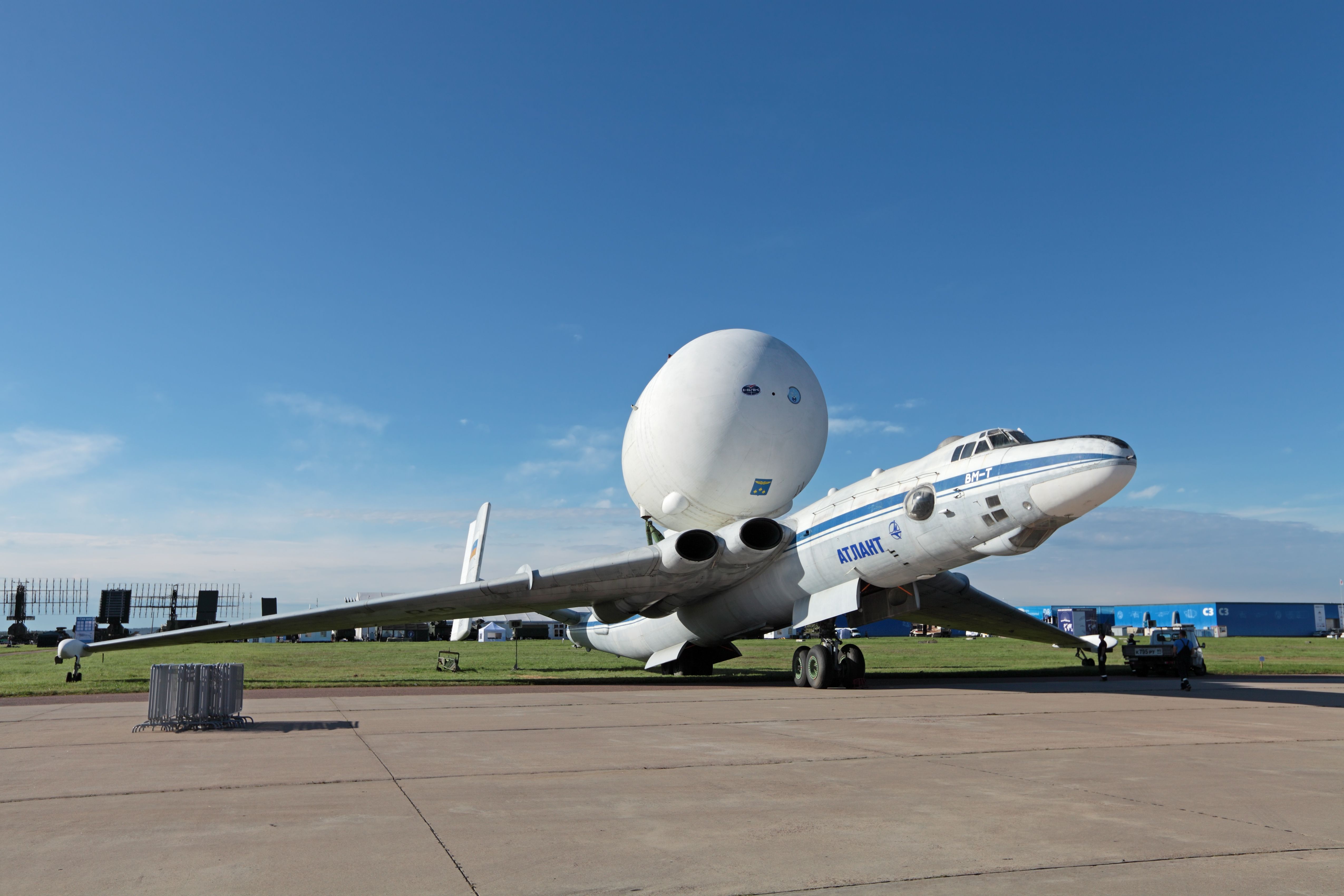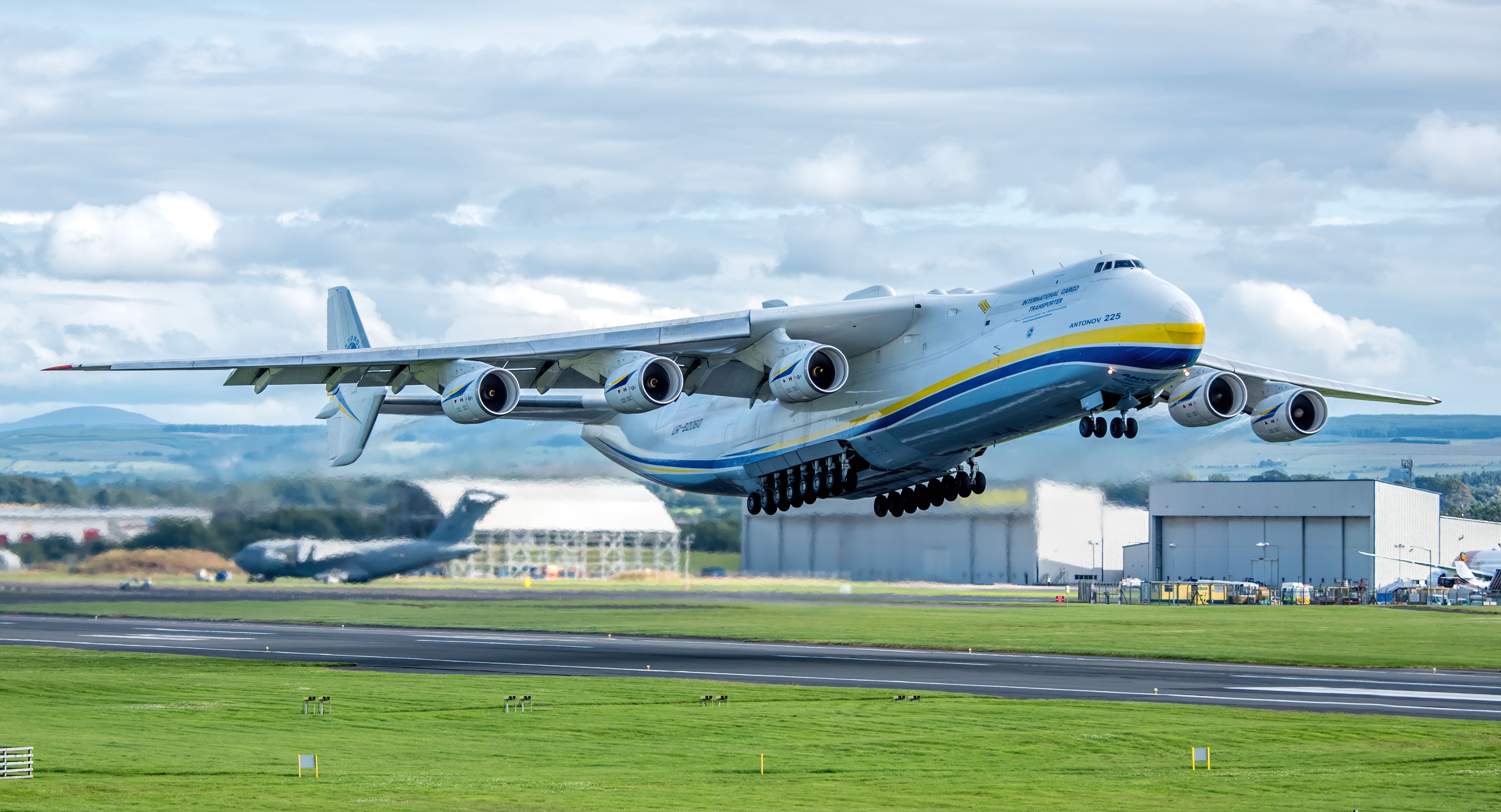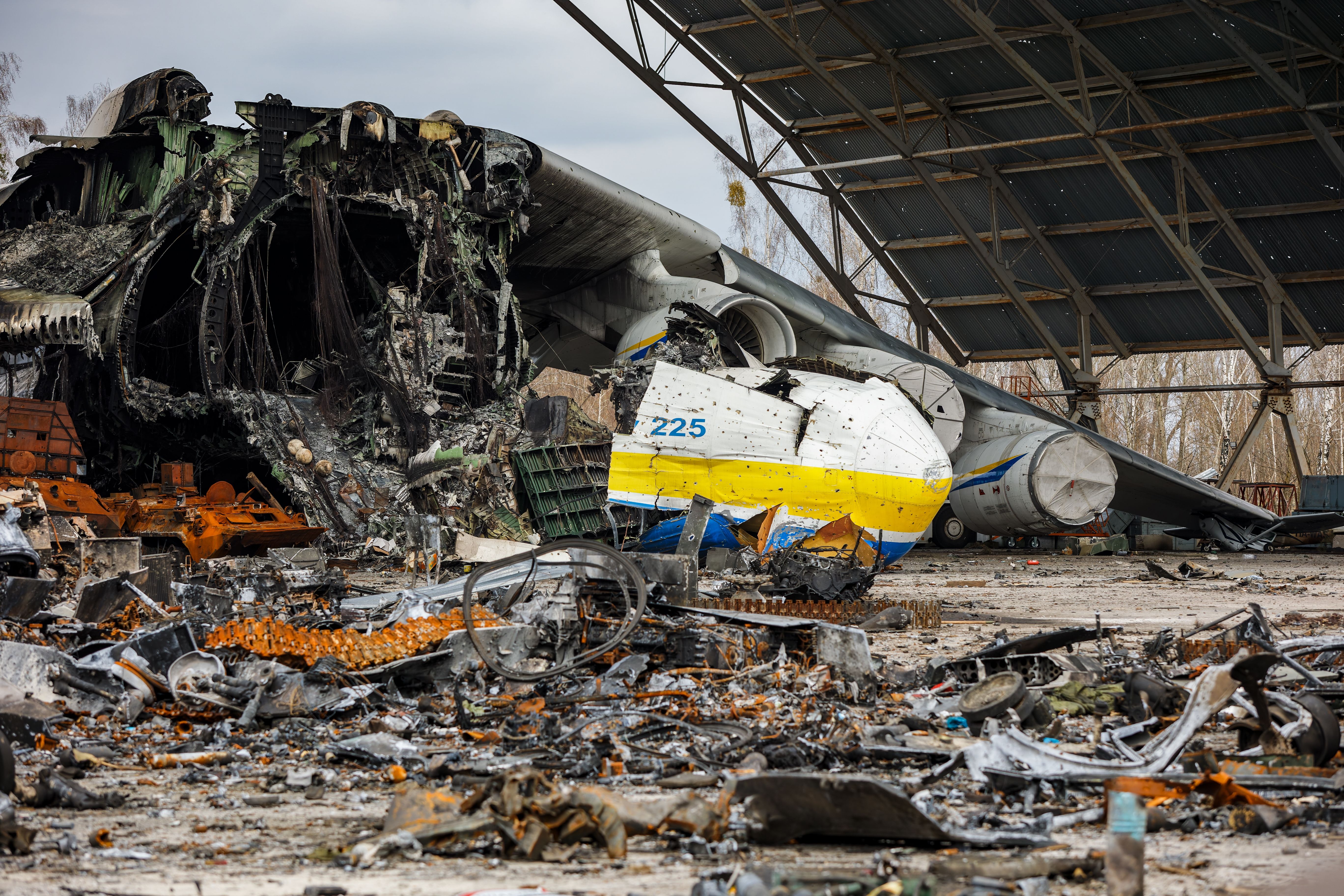The Antonov An-225 is the world record holder as the heaviest aircraft ever built. With six engines and 32 wheels, no other aircraft came close to its size and ability to transport the most outsized cargo. But why did such a huge airplane get built in the first place? As we will see, it came about as part of the Soviet space program.
Transporting a rocket
The Antonov An-225, known as Mriya - meaning 'dream' in Ukrainian, was ordered for just one purpose: to transport a space-bound rocket. Just as the US developed the Space Shuttle, the USSR also worked on a similar reusable, crewed space vehicle. The project was known as the Buran program (Buran means Blizzard) and was launched in 1971.
As part of this project, one reusable spacecraft was developed, also known as ‘Buran.’ This would be launched using a single-use rocket called ‘Energia.’
Just like the US Space Shuttle, the Buran needed to be moved. Parts of the rocket and the space vehicle needed to be moved up to 1,500 miles away, and with some of the parts having a length of 60m (200 ft) and diameter of 8m (26 ft), the aircraft doing the lifting needed to be big. Very big.
As well as this, the Buran could land on any runway throughout the USSR, but would need to be returned to Baikonur - the launch site - for future missions. Getting this job done by ground-based solutions would be a logistical nightmare. The huge size of the USSR and lack of infrastructure for land or sea movement meant there was only one solution - to move it by air.
NASA solved this problem using a modified Boeing 747 to transport the Space Shuttle. Rather than using an airplane already in operation, the USSR specifically designed a heavy cargo aircraft that could carry the shuttle on top of it. Its large cargo hold could also be used to transport parts of the Energia rocket.
Want answers to more key questions in aviation? Check out the rest of our guides here.
Choosing a base for the Buran transporter
Antonov had already developed a large-capacity cargo aircraft: the An-124. This first flew in 1982 and remains the largest cargo aircraft in operation today. However, it was still in its design phase at this point in time, and one particular design feature of the airplane meant it would be unsuitable for the mission - its vertical stabilizer. This was placed in such a way that it would obstruct the space vehicle's engines, and it was too far through the design and approval process to make such a big change.
The company then looked to its huge turboprop aircraft, the An-22. It was thought that the plane could be up to the mission with some minor modifications, either by having the cargo on top of the fuselage or inside the tail with a widened fuselage. However, it was found in modeling the solution that this would lead to a lack of stability and control, as well as several structural problems.
The brand-new Mi-26 helicopter was also considered, as it had a sizeable payload of up to 26 tons and seemed to be a promising solution. The Soviets tried out some test flights, using two, three or even four helicopters flying in formation to see if they could lift enough payload to be a Buran mover. However, one flight test hit turbulence, causing a terrifying pendulum swing of the cargo, forcing the pilots to dump their cargo.
The Soviet space project then pinned its hopes on an ongoing project known as VM-T. The project involved using the Myasishchev M-4 Molot strategic bomber and modifying it to carry more weight, forming an airplane known as the Myasishchev VM-T Atlant. Modifications included reinforcing the structure of the aircraft, adding a dual tail and equipping it with external fastening.
The VM-T was completed, in fact, two entered into service. They carried components of the Buran and rocket to Baikonur successfully on around 150 separate flights. However, these flights were not without risk. The loss of pressure inside the tanks of the Energia rocket could make landing the airplane impossible, as the increasing atmospheric pressure could collapse the entire structure. Reports of runway excursions, fuel leaks and other technical problems leaked out of the USSR, suggesting that this wasn't the perfect solution the Soviets were seeking.
And they already knew that because, quietly in the background, they had been working on something special to provide everything they needed for the space program. The 3M-T was a decent 'patch' while this new airplane was being developed, and by 1988, this giant carrier would arrive, leaving the two 3M-Ts to be retired. That plane was the An-225.
Based on the An-124
Although Antonov was too far through the design phase to make a fundamental change to the An-124, the testing program had confirmed to the firm that this was an exceptional cargo transporter. But it needed to be able to carry more weight - estimated to be 220 to 270 tons, not the 170 tons that the An-124 was designed for. It also needed a tail that didn't prohibit fuselage carrying capacity.
By using the An-124 as a base model, Antonov could save the expense of starting from a clean sheet design. The project would also benefit from a wide availability of spares, as most parts and components were the same as those used on the 124. The Ukrainian Ivchenko-Progress D-18T engines were the same ones used on the An-124, albeit the number was increased from four to six.
The fuselage was extended fore and aft, while the rear cargo door and ramp were removed to create extra internal space. More weight meant more wheels were needed, so the number of wheels was increased from five on each side to seven, for a massive total of 32. The resulting 84-meter An-225 can lift cargo weighing up to 250 tonnes. For comparison, the 747-8F freighter aircraft can lift up to 136 tonnes.
The tail was restructured to a T-tail design, giving more longitudinal space for fuselage-carried loads. Wider wings provided the additional lift, and various reinforcements were carried out to ensure it was structurally competent for the mission.
The development took three and a half years to complete, which was rapid for what was essentially a new airplane. By using mostly An-124 baseline design features, certification and production was much accelerated, something that was important to the USSR in these space-race times. In November 30th, 1988, the An-225 rolled out at Hostomel Airport for the first time as the largest and heaviest airplane ever built. Its wingspan is only eclipsed by the Spruce Goose, at nine meters longer.
The end of the Buran project
Unfortunately for the An-225, the purpose for which it had been built soon faded from the priorities of the USSR. Drying up state funds, instability in relations with Ukraine and other challenges meant the project was officially shut down in 1993 by order of President Boris Yeltsin. As the USSR collapsed, the An-225 had only completed 113 test flights and 253 flying hours, and just 14 flights with the Buran on board.
With no work left for the Antonov giant, it was stored at Hostomel Airport and stripped of parts in order to keep the busy An-124 fleet serviced. It seemed that the mega-project had met a sticky end before it had even got going. But all was not lost for the An-225, as Antonov still believed in its capabilities to be a cargo hauler for specialist missions. By the late '90s, the team was busy at work making modifications to the airframe to allow it to return to service.
It returned to operations in 2001, and offered up for charter for the biggest and most complex missions. The BBC previously estimated the cost to hire the Mriya at $30,000 per hour, but for customers who needed to move huge, heavy items far across the world very quickly, it proved its worth. It set the record for the heaviest single cargo item in 2009, flying a 189-tonne generator to Armenia for use in a gas power plant. In June 2004, it flew with four pipe-laying machines from Prague to Tashkent, setting a payload record of 247 tonnes. In fact, Mriya has set multiple world records for carrying outsized cargo and for its own sheer size and weight.
But the conflict in its home region was not done yet, and when Russia invaded Ukraine in 2022, Mriya was in the firing line. On February 27th, 2022, Ukraine confirmed the airplane had been destroyed at Hostomel Airport, and photos began to emerge of the scale of the damage to the aircraft. Heartbreakingly, it had recently been refurbished to allow it to continue flying until at least 2033.
There is a second An-225
There was only ever one An-225. There were original plans to build three more aircraft, but these were dropped after the collapse of the Soviet Union in 1991. However, one other aircraft had started construction, which still sits unfinished in a warehouse in Kyiv, considered to be around 70% complete.
Ukraine's President Zelensky has pledged that the An-225 will be rebuilt, but it remains to be seen when and even if this will come to fruition. If Ukraine does embark on the rebuild, the second plane could serve as a base for the reconstruction. Zelensky has estimated the cost of this project at 500 million Euros ($555 million). However, even that could be somewhat optimistic, with the Ukrainian state defense company previously estimating the restoration at over $3 billion.
Ukraine has admitted that it would take at least five years to reinstate the Mriya and will certainly be looking for outside investors to fund the project. Given the amount of humanitarian and infrastructural repairs required in Ukraine once the conflict ends, spending State money on such a project would not be a good look. Given its very niche role and limited demand, any new An-225 would be more of a pride project than anything else. Nevertheless, we can wholeheartedly support the restoration effort from an avgeek point of view and hope Ukraine does bring the Mriya back eventually.
What do you think of the An-225? Do you believe there is space for another ever to be built? Let us know your thoughts in the comments.

